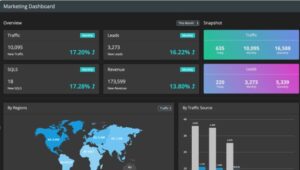The State of PlayStation: A Deep Dive into Sony’s Current Gaming Strategy
In the ever-shifting landscape of the global gaming industry, standing still is not an option. The lines between platforms are blurring, business models are evolving, and player expectations are higher than ever. At the heart of this dynamic environment stands Sony’s PlayStation, a brand synonymous with console gaming for decades. However, the strategies that defined its past successes are being augmented and reshaped to meet the challenges of a new era. Today’s PlayStation News is less about a single console and more about a burgeoning, interconnected ecosystem that spans hardware, exclusive software, PC gaming, and cloud services. This article provides a comprehensive technical analysis of PlayStation’s current position, dissecting its hardware revisions, its calculated expansion beyond the console, and the strategic implications for the entire Gaming Industry. We will explore how Sony is balancing its legacy of blockbuster exclusives with the undeniable momentum of multi-platform and service-based gaming, offering insights for both dedicated fans and industry observers.
Section 1: The Core Kingdom – Hardware Supremacy and Exclusive Content
At its core, the PlayStation brand is built on two foundational pillars: cutting-edge hardware and a library of critically acclaimed exclusive games. This combination has historically been Sony’s primary driver for market leadership, and the PlayStation 5 generation is no exception. Understanding these pillars is crucial to analyzing their broader strategy.
The PlayStation 5 Hardware Cycle: Iteration and Expansion
The PlayStation 5 launched as a powerhouse of Gaming Tech, defined by its custom AMD Zen 2 CPU and RDNA 2 GPU architecture. However, its most lauded feature was the ultra-high-speed NVMe SSD, which drastically reduced loading times and enabled new possibilities in Game Design. This focus on speed and performance set a high bar for the current generation of Console Gaming.
Recently, Sony has followed its traditional mid-cycle playbook by introducing a revised, more compact PS5 model, often referred to as the “PS5 Slim.” While internally delivering the same performance, this iteration offers consumers a smaller form factor and a detachable disc drive, providing modularity and a slightly lower entry point for the digital-only version. Furthermore, the introduction of the PlayStation Portal, a dedicated remote play device, signals Sony’s intent to untether the gaming experience from the television. It’s not a cloud-native device but a high-quality streaming screen for your existing PS5, designed for in-home use. This hardware strategy aims to saturate the market with options, catering to different needs and price points while keeping the core PS5 console at the center of the experience.
The Unwavering Power of AAA Exclusives
Hardware is only half the equation. Sony’s primary value proposition remains its stable of first-party studios and the AAA Games they produce. Titles like God of War Ragnarök, Marvel’s Spider-Man 2, and Horizon Forbidden West are not just games; they are system-sellers and cultural touchstones. These narrative-driven, single-player RPG Games and action-adventure titles are meticulously crafted to showcase the full potential of the PlayStation hardware. The haptic feedback and adaptive triggers of the DualSense Game Controller, for instance, are often best demonstrated in these bespoke experiences. By acquiring and nurturing studios like Insomniac Games, Naughty Dog, and Sucker Punch Productions, Sony has built a content pipeline that consistently delivers high-quality, must-play experiences that you cannot get anywhere else on launch day, a key differentiator from Xbox News and its Game Pass strategy.
Section 2: Expanding the Borders – PlayStation’s Foray into PC and Live Services
While exclusives fortify the core console business, Sony is increasingly looking beyond its walled garden to capture new audiences and revenue streams. This strategic expansion into PC Gaming and live service models represents one of the most significant shifts in PlayStation’s modern history.
Porting a New Strategy: The Calculated Push to PC
For years, the idea of playing a major PlayStation exclusive on a PC was a fantasy. Today, it’s a core part of Sony’s business model. Following a timed exclusivity window on console, Sony has been systematically bringing its biggest hits to PC platforms like Steam and the Epic Games Store. Games like God of War (2018), Days Gone, and The Last of Us Part I have found new life and commercial success on PC. This strategy serves multiple purposes:

- New Revenue: It allows Sony to monetize its games a second time with a completely different audience of dedicated Gaming PCs users.
- Brand Marketing: It acts as a “gateway” for PC players, giving them a taste of the PlayStation experience and potentially converting them into future console buyers for the sequels.
- Talent and Tech Development: Porting games to PC, with its vast array of Gaming Hardware configurations (from different Graphics Cards to Gaming Monitors), helps their development teams at studios like Nixxes Software become more versatile.
This move is a delicate balancing act. The delay between console and PC release must be long enough to protect the value of the PS5, but short enough to maintain relevance and hype. So far, the strategy appears to be paying off, expanding the reach of PlayStation’s IP without cannibalizing its primary hardware sales.
Live Service and Cloud Gaming Ambitions
Another major area of expansion is in live service games and Cloud Gaming. Sony has publicly stated its goal to launch over 10 new live service titles by 2026, a significant pivot from its single-player focus. The acquisition of Bungie, the studio behind the highly successful Destiny 2, is a cornerstone of this plan, providing Sony with deep expertise in the MMORPG News and live service space. This strategy aims to create long-term player engagement and recurring revenue, similar to what’s seen in popular Battle Royale titles like Fortnite News and Apex Legends News.
On the cloud front, PlayStation’s offering is integrated into the highest tier of its PlayStation Plus subscription. It allows players to stream a catalog of PS3, PS4, and PS5 games without a download. While technically functional, it faces stiff competition and the inherent challenges of latency and image compression. Unlike competitors who are pushing for cloud gaming on any device, Sony’s Game Streaming service is currently positioned more as a value-add for its most dedicated subscribers rather than a standalone platform, though this could evolve as the technology matures.
Section 3: The Broader Ecosystem – Services, Peripherals, and Community
A modern gaming platform is more than just a box that plays games. It’s an ecosystem of services, accessories, and social features designed to create a sticky and engaging user experience. PlayStation has invested heavily in building out this ecosystem to complement its core hardware and software offerings.
A Deep Dive into the PlayStation Plus Tiers
In 2022, Sony revamped its PlayStation Plus service into a three-tiered model to better compete with Xbox Game Pass. This was a critical piece of Gaming News that reshaped their service offerings.
- PS Plus Essential: This is the base tier, offering online multiplayer access, cloud saves, and a few “free” monthly games to claim, mirroring the original PS Plus model.
- PS Plus Extra: This tier includes everything in Essential plus access to a large, rotating “Game Catalog” of hundreds of PS4 and PS5 games, including many first-party hits and popular Indie Games.
- PS Plus Premium: The top tier includes all previous benefits, plus the aforementioned Cloud Gaming service and a “Classics Catalog” featuring games from the original PlayStation, PS2, PSP, and remastered PS3 titles, appealing to fans of Retro Gaming and Gaming History.
Unlike Game Pass, Sony does not put its brand-new, first-party exclusives on the service on day one. This fundamental difference highlights their strategy: use the service as a value-add and a way to experience their back catalog, while preserving the premium, full-price value of their new Game Releases.
Beyond the Controller: Peripherals and VR Gaming
Sony’s investment in Gaming Peripherals enhances the immersive experience. The DualSense controller remains a standout piece of tech. However, the ecosystem extends to the Pulse 3D Audio headset, designed to leverage the PS5’s Tempest 3D AudioTech, and various third-party licensed accessories from Gaming Headsets to high-performance Racing Wheels.

The most significant peripheral is the PlayStation VR2. A successor to the original PSVR, the PS VR2 is a high-end VR Gaming headset featuring 4K HDR OLED panels, eye-tracking, and headset feedback. It offers a premium, console-based VR experience that is more accessible than a comparable PC VR setup requiring a powerful Gaming PC. While VR remains a niche market, Sony’s continued investment provides a unique selling point and a platform for innovative game design, with titles like Horizon Call of the Mountain showcasing its potential.
Section 4: The Path Forward – Recommendations and Future Outlook
Sony’s PlayStation is navigating a complex but exciting period of transition. It is attempting to maintain its dominant position in the traditional console market while simultaneously planting flags in the expanding territories of PC and live service gaming.
Pros and Cons of the Current Strategy
Pros:
- Strong Brand Identity: The focus on high-quality, narrative-driven exclusives remains a powerful differentiator.
- Diversified Revenue: PC sales and a growing service model reduce reliance on console hardware sales alone.
- Premium Hardware Experience: The PS5, DualSense, and PS VR2 offer a technologically advanced and cohesive gaming experience.
Cons:
- Slower Service Growth: The decision to withhold new exclusives from PlayStation Plus on day one makes it a less aggressive proposition than Xbox Game Pass.
- Live Service Risk: The pivot to live service games is challenging and costly, with no guarantee of success in a crowded market dominated by titles like League of Legends News and Valorant News.
- Potential Brand Dilution: Releasing exclusives on PC, even with a delay, could slowly erode the “must-buy” status of the console for some players.
Recommendations for Gamers
Navigating the PlayStation ecosystem depends entirely on your priorities as a player.
For the Hardcore Fan: If you want to play the biggest PlayStation exclusives the day they are released, with the best possible integration of hardware features, the PS5 console remains the undisputed choice. Investing in a PS Plus Premium subscription offers the best value for accessing a vast back catalog.
For the Patient PC Gamer: If you own a powerful Gaming PC with a top-tier graphics card and don’t mind waiting a year or two, you can now access an increasing number of PlayStation’s best games, often with enhanced graphical options.
For the Casual Player: The PS Plus Extra tier offers an incredible value proposition, providing access to a massive library of games for a monthly fee, making it an excellent way to explore what the platform has to offer without buying every game individually.
Conclusion: A Calculated Evolution for a New Gaming Era
The narrative surrounding PlayStation is one of calculated evolution. Sony is not abandoning the formula that made it a titan of the Gaming Industry; it is augmenting it. The PlayStation 5 console, powered by its blockbuster exclusives, remains the sun in its solar system. However, the planets orbiting it are growing in number and importance. The strategic expansion to PC, the tiered subscription services, and the ambitious push into live service games are all designed to build a more resilient, profitable, and far-reaching ecosystem. While challenges from competitors and the inherent risks of new ventures remain, PlayStation’s current trajectory demonstrates a clear understanding of the modern gaming landscape. It’s a strategy that respects its history while boldly charting a course for a multi-platform future.













